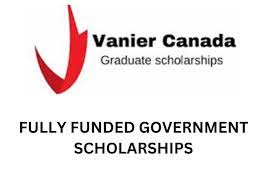Applying for a Canadian graduate scholarship takes careful planning and knowing the rules. As of July 2025, Canadian universities and the government offer many scholarships for both local and international students. These scholarships help attract talented students and support research and learning in many fields. Since tuition and living costs are rising, especially for international students, getting a scholarship can make a big difference. Knowing the steps well can improve your chances and help avoid mistakes. Here is a simple guide to help you apply successfully.
Researching Available Scholarships
The first step in the application process is identifying which scholarships are available and applicable to your program of study. In Canada, there are various types of scholarships, including those offered by the federal government, provincial governments, universities, and private organizations. Some of the most competitive and prestigious scholarships in 2025 include the Vanier Canada Graduate Scholarships, the Canada Graduate Scholarships–Master’s Program (CGS-M), and the Banting Postdoctoral Fellowships.
Students must begin by reviewing the official websites of Canadian universities and scholarship portals such as the Canadian Government’s Scholarships and Financial Aid page. It’s also important to explore databases like Universities Canada, EduCanada, and individual institutional websites that publish up-to-date listings of funding opportunities.
When researching scholarships, take note of deadlines, eligibility requirements, program focus, and whether it is open to international applicants. Not all scholarships are created equal, and some may be specific to certain faculties, research areas, or demographic groups. A well-targeted list will save you time and improve your odds of success.
Many students make the mistake of applying randomly without considering whether the scholarship aligns with their academic or professional goals. Make sure to match your profile with the expectations of the awarding body. This early research stage is foundational to your success later in the process.
Checking Eligibility Criteria
Once you’ve identified scholarships of interest, the next step is to carefully review the eligibility requirements. Most graduate scholarships in Canada are merit-based, focusing on academic excellence, research potential, and leadership abilities. Others may include financial need, citizenship status, or language proficiency.
For example, the Vanier CGS program is available to doctoral students who demonstrate academic excellence, research capability, and leadership qualities. In contrast, the CGS-M targets students entering a master’s program with a strong academic background. Scholarships may also require applicants to have been admitted to a specific institution or program before applying.
Eligibility is not just about meeting the minimum criteria. It also involves understanding nuances like GPA thresholds, field of study limitations, and requirements for letters of reference or supervisor support. Missing even one small detail can disqualify an otherwise strong candidate.
It’s advisable to prepare a checklist for each scholarship opportunity, ensuring that you meet all the required conditions before investing time into a detailed application. Where possible, reach out to the university’s scholarship or financial aid office for clarification on grey areas.
Securing Admission to a Graduate Program
For most Canadian graduate scholarships, being accepted into a graduate program is a prerequisite. This means that your scholarship application may need to run in parallel with your university application. In some cases, universities nominate admitted students for specific awards, so gaining admission is not only necessary—it’s strategic.
You will need to select a graduate program and institution that align with your academic goals. The application typically involves submitting academic transcripts, a statement of purpose, letters of recommendation, a research proposal (for thesis-based programs), and proof of language proficiency (IELTS or TOEFL for English, TEF for French).
In 2025, most Canadian universities accept online applications, and some now use centralized platforms like OUAC (Ontario) or ApplyAlberta for streamlined admissions. It is crucial to adhere to both the university application deadlines and the scholarship deadlines, as missing one could affect the other.
To strengthen your application, consider reaching out to potential supervisors ahead of time, particularly for research-based programs. A strong letter of support from a faculty member who believes in your research idea can significantly improve both your admission and scholarship prospects.
Preparing Your Application Package
Once you’re clear on the requirements, begin assembling your scholarship application package. This typically includes your academic transcripts, curriculum vitae, research proposal, personal statement, and letters of recommendation. Each component must be tailored to reflect the values and expectations of the scholarship committee.
In 2025, digital portfolios and multimedia presentations are becoming more acceptable for certain creative or interdisciplinary scholarships. Nevertheless, the traditional written components remain central to most applications. Take time to draft, edit, and polish your documents with help from mentors, writing centers, or scholarship advisors.
Your personal statement or statement of intent should articulate not only your academic goals but also how receiving the scholarship will contribute to your career and community. This is your chance to stand out from equally qualified peers. Use specific examples to show leadership, resilience, and impact.
Letters of recommendation should come from academic or professional references who know you well and can speak to your achievements and potential. Guide your referees with a copy of your CV and scholarship details to help them craft relevant and supportive letters.
Submitting the Application and Following Up
After compiling all required documents, submit your application through the designated platform or email address. Many Canadian scholarship programs use portals like ResearchNet, NSERC’s online system, or university-specific platforms for submission. Be mindful of time zones and technical issues when uploading documents, especially close to the deadline.
Always double-check that every required form and supporting material is included and properly formatted. Incomplete applications are often rejected without review. It’s helpful to print a confirmation page or receive an email receipt for future reference.
After submission, it’s essential to monitor your email and scholarship account for updates. Some programs may request interviews, additional documents, or clarification on certain points. Being prompt and professional in your responses helps keep your application active and competitive.
Awaiting Results and Exploring Alternatives
Scholarship decisions may take weeks or even months, depending on the program. While waiting, use the time to explore other funding opportunities such as research assistantships, teaching assistantships, or bursaries offered by your chosen university. In 2025, many institutions allow students to combine partial scholarships with employment-based funding to meet their financial needs.
If your application is unsuccessful, don’t be discouraged. Ask for feedback if available, and consider applying again the following year or trying a different scholarship that aligns more closely with your background. Many successful scholars only received their award after multiple attempts.
Persistence, preparation, and timing are key to securing financial support in Canada’s competitive scholarship landscape. Whether you are a domestic or international student, following a structured approach to the application process significantly increases your likelihood of success.
Conclusion: A Strategic Path to Graduate Funding
The process of applying for a Canadian graduate scholarship is detailed and multi-layered, requiring early preparation, strategic planning, and a deep understanding of each scholarship’s criteria. From researching programs and checking eligibility to securing admission and submitting a compelling application, each step plays a vital role in achieving your academic funding goals.
In the evolving academic climate of July 2025, where excellence, innovation, and leadership are more valued than ever, graduate scholarships in Canada continue to offer deserving students the opportunity to reach their full potential. With the right approach and unwavering focus, these scholarships can be the bridge to a successful academic and professional future in one of the world’s most supportive educational environments.




Refreshing information